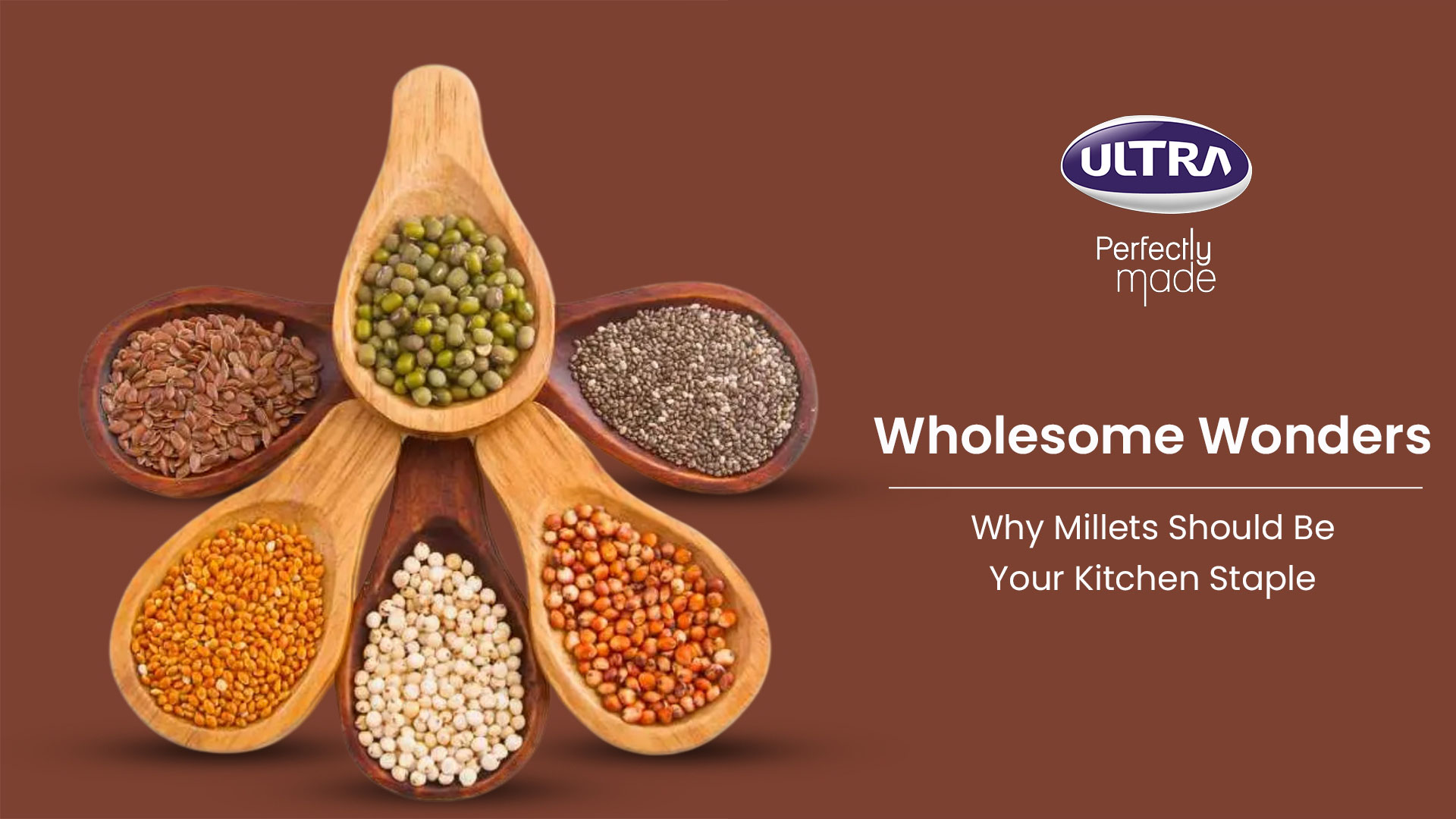
Wholesome Wonders – Why Millets Should Be Your Kitchen Staple
In a world that’s slowly moving towards healthier eating habits and mindful food choices, ancient grains are making a powerful comeback – and at the heart of this revival is millet. Once considered the humble food of rural India, these tiny grains are now being celebrated globally as superfoods. Packed with nutrients, easy to digest, and versatile in cooking, millets are a gift from nature that nourish both the body and the planet.
What Are Millets?
Millets are a group of small-seeded cereal grains that have been cultivated in India for thousands of years. They come in several varieties—each with its unique taste and health benefits. Popular types include pearl millet (kambu), finger millet (ragi), foxtail millet (thinai), little millet (saamai), kodo millet (varagu), and barnyard millet (kuthiraivali). Unlike polished white rice or refined wheat flour, millets are unrefined, gluten-free, and rich in fiber, protein, and essential minerals. Millets are:
Rich in fiber
Good for sugar control
Naturally gluten-free
Rich in iron, calcium, magnesium
Gives long-lasting energy
Here’s why millets deserve to be a permanent part of your kitchen staples —for your health,your family, and the future.
Tiny Powerhouses of Nutrition
Millets may be small in size, but they’re loaded with essential nutrients that most modern grains lack. Each type of millet has its own unique benefit.
- Ragi (Finger millet) – A calcium champion, great for growing kids and elderly bones
- Kambu (Pearl millet) – High in iron, perfect to combat anaemia
- Thinai (Foxtail millet) – Diabetic-friendly with a low glycemic index
- Varagu (Kodo millet) – High in fiber, supports weight loss and digestion
- Samai (Little millet) – Light on the stomach, ideal for summer meals
- Kuthiraivali (Barnyard millet) – Rich in fiber and helps regulate blood sugar levels

Versatile for Traditional and Modern Dishes

Many people hesitate to try millets thinking they’re difficult to cook. But they are just as easy as cooking rice or wheat. You can incorporate millets in your daily diet in many ways.
- Regular tiffin as ragi dosa, millet idli, paniyaram, pongal, upma, even adai
- Replace rice with samai or varagu for sambar rice, lemon rice, or curd rice
- Breakfast items like ragi malt, kambu koozh, millet porridge with jaggery
- Snacks like ragi roti, millet pakoras, or millet cutlets.
You can also prepare millet batter in your regular wet grinder. Soaking millets along with urad dal and a bit of methi gives you a soft, fermenting-friendly batter for idli, dosa, and more.
Supports Weight Loss and Digestive Health
Millets are ideal for people watching their weight, for managing PCOS and for elders who want something light yet filling. If you often feel heavy or bloated after a meal, millets can be a game changer. They are high in fiber, low in starch, gluten-free, can keep your digestion smooth and is perfect for those with gluten intolerance or sensitive guts.

Suitable for All Ages

From toddlers who need gentle first foods, to grandparents who prefer easily digestible meals, millets suit everyone. Ragi porridge is excellent for babies and helps in bone development. Kambu kanji is cooling and nourishing for elders during summer. Millets help maintain energy without heaviness, which is why they are also great for lunchboxes and office meals.
Eco-Friendly and Farmer-Friendly
Millets are not just good for our body; they’re also kind to the earth.
- Require 70% less water than rice
- Grow well in dry climates without chemical fertilizers
- Naturally pest-resistant
- Grow faster and support soil health
By choosing millets, you’re supporting local farmers and helping to revive traditional,sustainable agriculture.

Easily Available and Budget-Friendly

Millets are easily available in local grocery stores, supermarkets, organic shops, and online platforms across India. Grown widely in rural regions, they are affordable and cost-effective compared to many modern health foods. With a long shelf life and minimal processing, millets offer great value for money. From whole grains to flours and ready mixes, they come in various forms, making it easy for every household to include nutritious, budget-friendly millets in their daily meals.

